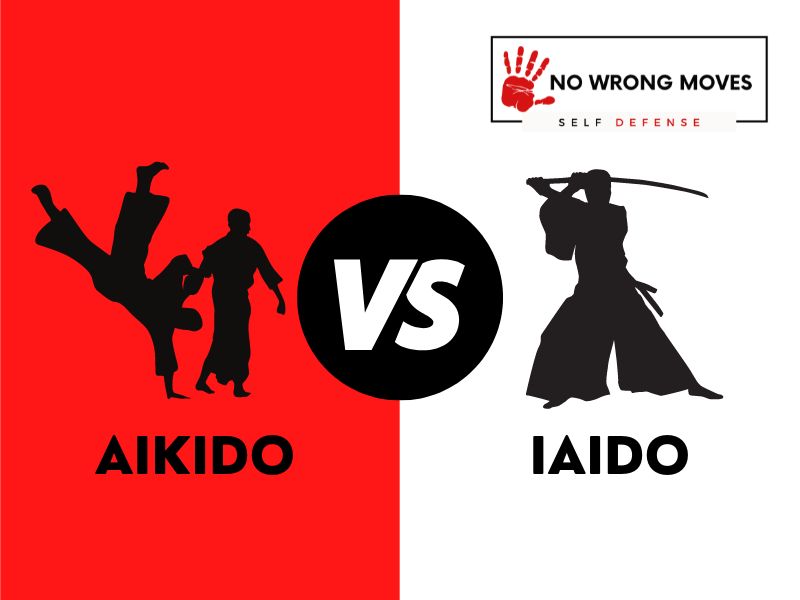
Many people in the martial arts community debate whether Aikido or Iaido is the better practice. While both offer unique benefits and principles, there are some key differences that set them apart.
The main difference between Aikido and Iaido is that aikido focuses on self-defense and conflict resolution while iaido focuses on the art of drawing and cutting with a sword (often called "quick draw").
Another key difference is that aikido includes throws and joint locks, as well as unarmed defense against armed attackers, while iaido does not have any throwing or joint locking techniques.
In terms of weapons training, aikido primarily uses the wooden sword (bokken) and wooden staff (jo), but may also include training with knives and other weapons. Iaido, on the other hand, focuses solely on the sword (usually a wooden or metal replica called a bokken or iaito).
The movements and techniques in Aikido are fluid and circular, while those in Iaido tend to be more linear and direct.
In terms of mindset, Aikido emphasizes non-resistance and resolving conflict without harm, while Iaido emphasizes precision, control, and discipline in the mastery of swordsmanship.
Lastly, Aikido was founded by Morihei Ueshiba in the mid-20th century, while Iaido has a much longer history tracing back to the 16th century and the development of the Japanese samurai class.
What We Know About Aikido
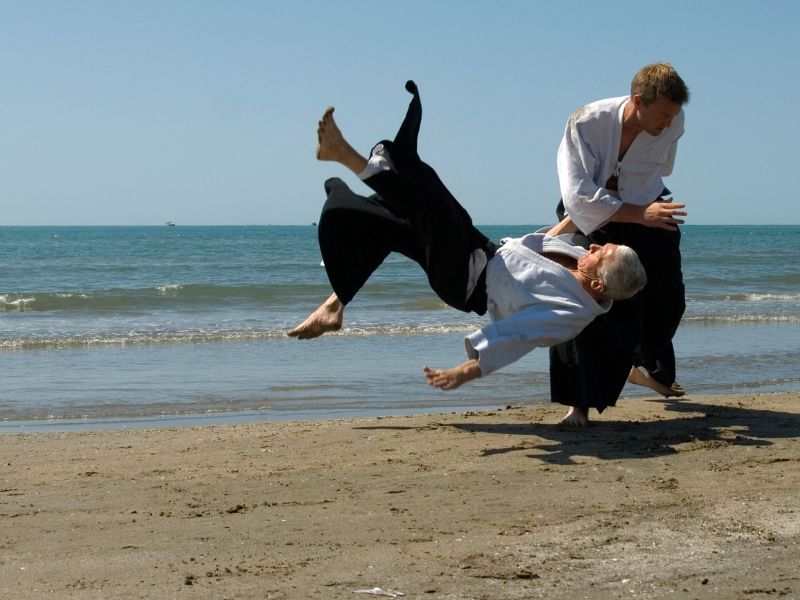
The art of Aikido is overall a defensive martial technique. This means it's not intended to work aggressively, but rather when somebody becomes aggressive towards you. The aggressor in this case will often take on some form or another.
A lot goes into each movement, regardless of if it's standing still or moving around. It has also been considered very aesthetically beautiful thanks largely due to its fluidity and grace. Learning how to properly balance yourself and redirect an attacker’s energy is key for the art of Aikido.
One important aspect of Aikido is also being able to control your own emotions during a potentially tense situation. It teaches practitioners to remain calm and in control, instead of escalating conflicts or resorting to violence as a first option.
Overall, Aikido is not just about learning self-defense techniques, but also about the discipline and mindfulness that goes into each movement and decision made during an altercation. It can be a fulfilling practice for both the body and mind.
What We Know About Iaido
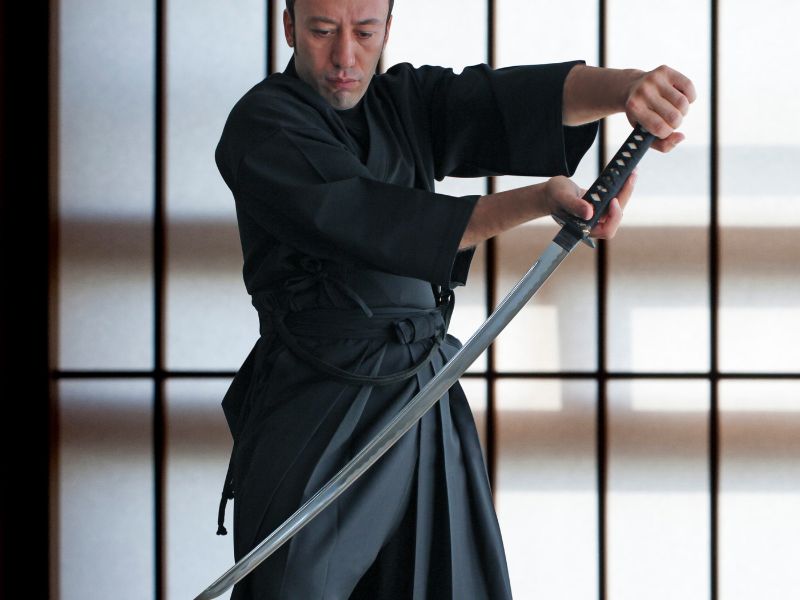
Iaido is a Japanese martial art that emphasizes being aware and capable of quickly drawing the sword and responding to sudden attacks.
The four main components of iaido are the smooth, controlled movements of drawing the sword from its scabbard, striking or cutting an opponent, shaking blood from the blade, and placing the sword in the scabbard.
Iaido can be practiced with a wooden sword (bokken) or a blunt-edged sword called an iaitō. Few, more experienced, iaido practitioners use a sharp-edged sword (shinken). Iaidoka are usually referred to as swordsmen.
The practice of iaido is said to foster inner calm and peace of mind, as well as improve focus, concentration and mental clarity.
On top of all this, regular practice can help to improve physical coordination and balance. While the majority of iaido practitioners are men, there is a growing number of women who are taking up this traditional martial art.
Of course, this is only a brief history and understanding of Aikido and Iaido, but if you want to go deeper into either art, be sure to check out the following posts:
Now, back to the comparison...
Let's look at the origins of the respective disciplines and then compare the key elements of their practices. You will be able to understand some of their similarities and differences a bit better afterward.
| Aikido | Iaido | |
| Origins | Japanese | Japanese |
Another thing I think is important to look at is the different rankings and levels in each art. if you are looking to take up either Aikido or Iaido, whether as a hobbyist or to compete, you need to understand the different levels of proficiency and what is required for testing and ranking.
Aikido Rankings & Levels
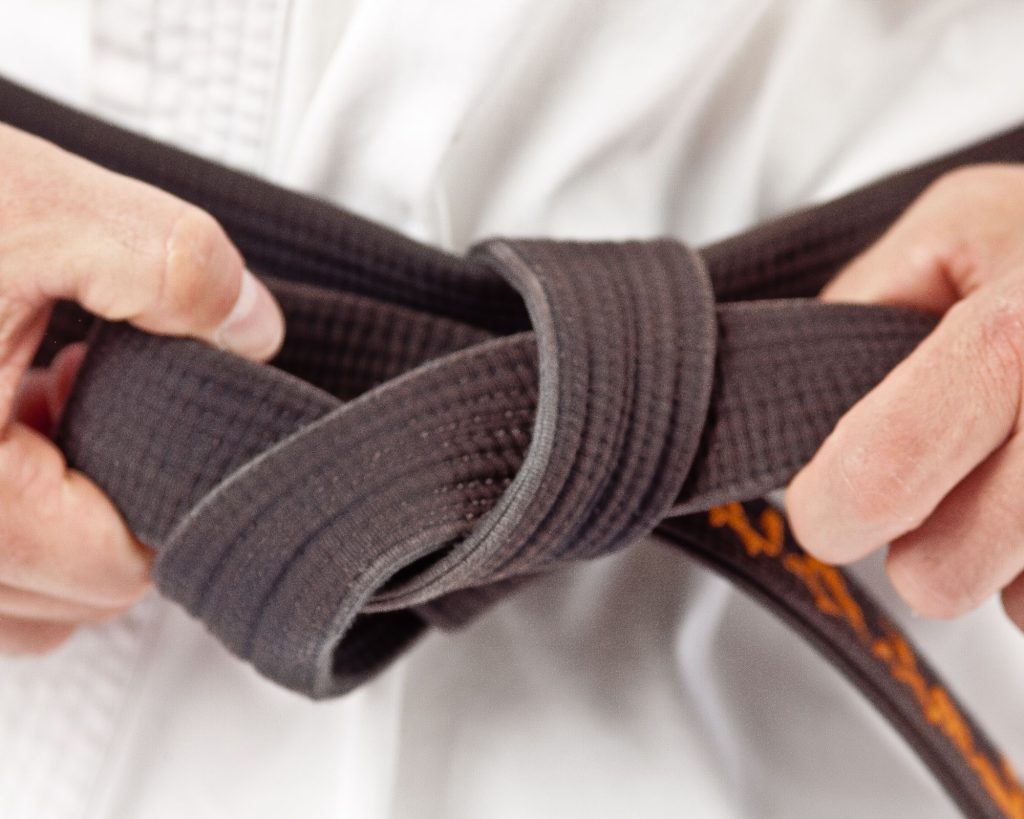
Aikido is a discipline that has many different levels, each represented by a different colored belt. The first level is white belt, which is for beginner students. Once you have mastered the basics of Aikido, you can move on to the blue belt, which is for intermediate students.
And finally, once you have mastered the art of Aikido, you can become a black belt, which is the highest level.
There are three degrees as a black belt holder: 1st dan, 2nd dan, and 3rd dan black belt. In order to achieve each of these degrees, you must pass a test that proves your mastery of Aikido.
There are also other ranks and colors that exist outside of the traditional ranking system. In some Western Aikido schools, there are more ranks added in between 1st dan and 2nd dan.
These ranks can be any combination of colors, and it allows for students to be promoted at a more gradual pace and helps to distinguish between students of different ranks.
Iaido Rankings & Levels
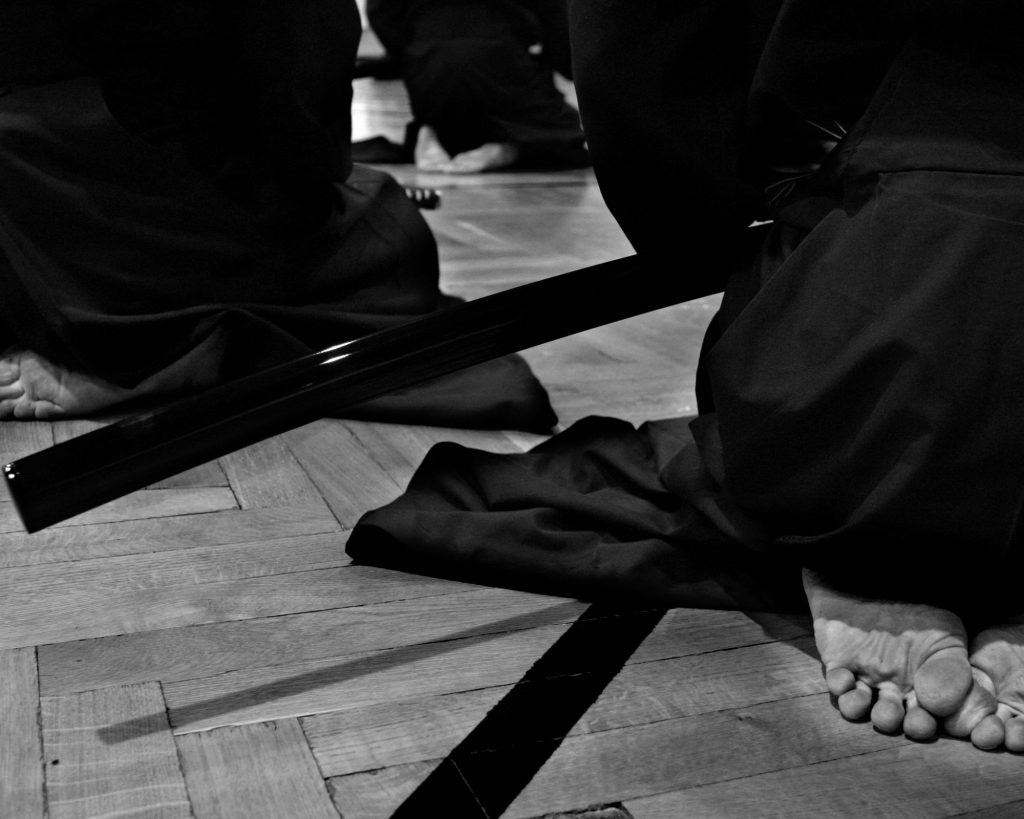
There are four levels or ranks in Iaido: Shoden, Chuden, Okuden, and Masters. Each level has a corresponding system and set of teachings.
Shoden is the first level and is focused on learning the basics of Iaido. Students learn how to perform the five cuts of Iaido, as well as the proper way to hold and draw the sword.
The Shoden system teaches about the philosophy and history of Iaido, as well as how to develop correct posture and breathing habits.
Chuden is the second level and builds on the basic skills learned in Shoden. Students learn more advanced techniques, such as multiple cuts and combinations. The Chuden system also teaches proper footwork and how to use your body to increase power in your strikes.
Okuden is the third level and teaches even more advanced techniques. Students learn how to use their mind and spirit along with their body to achieve maximum effect when striking an opponent. The Okuden system also teaches about meditation and how to control your energy levels.
Master is the highest rank in Iaido and is only achieved after many years of dedicated practice. Masters learn all of the techniques from the previous levels, as well as more advanced forms that are not taught to lower ranking students.
Masters also learn about the spiritual side of Iaido, including how to use ki (energy) for healing purposes.
Aikido Vs. Iaido Attire
This section simply compares the clothing and uniforms that practitioners wear in combat.
Aikido Attire:
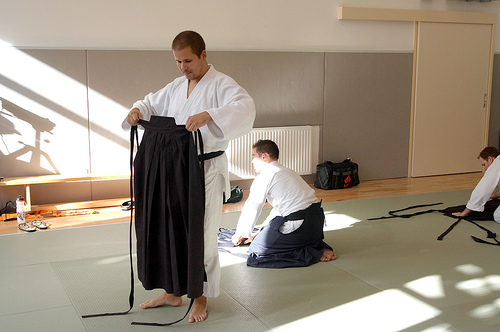
Most aikido practitioners wear a white dogi, or “uniform.” The dogi is a loose-fitting cotton kimono with a belt. In some schools, aikido students also wear hakama, which are pleated trousers that are tied at the waist and fall below the knee.
Male practitioners often don white tabi (socks), while female practitioners often wear white zori (wooden sandals). Some people also choose to practice without any clothes on in order to better feel their body and movements, but this isn't all too common.
Iaido Attire:
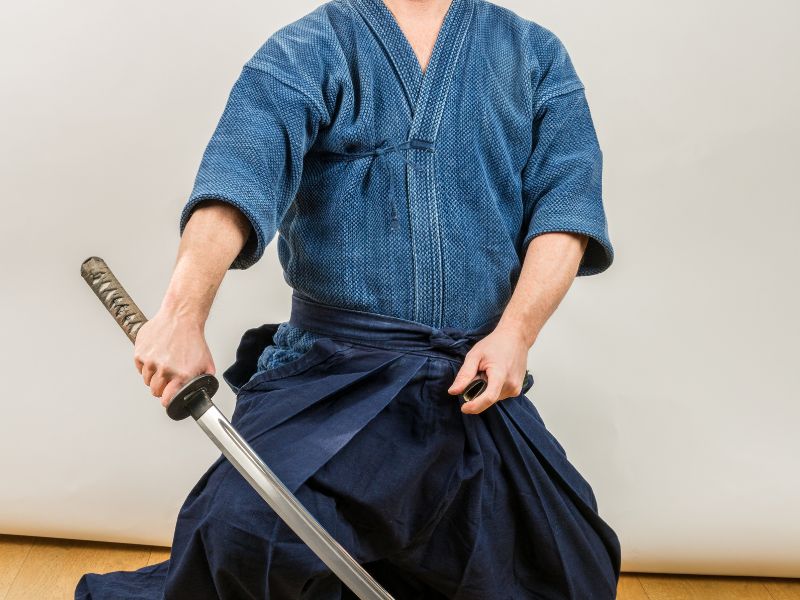
Iaido practitioners traditionally wear a white jacket and black hakama, or pleated skirt.
While some schools have begun to allow students to wear modern clothing, many still insist on the traditional attire. In addition to the clothing, practitioners also typically wear a sword belt (obi) and a cloth headband (hachimaki).
What A Typical Aikido Training Session Looks Like

A typical Aikido practice session usually starts with a bow. This is a sign of respect for the dojo, the other students, and the instructor. The etiquette of aikido extends beyond just the bow, though. One must always be respectful, appreciative, and protective of all beings.
This attitude must be carried throughout the entire practice session.
Physical strain, whether during conditioning or in sparring against others, is part and parcel of Aikido. As such, practitioners need to maintain good manners and a positive attitude whenever they're in aikido class.
Aikido teaches you how to handle violence, but it still ultimately strives for peace, so never let your ego get in the way during your training.
Also remember that non-resistance is an essential element of proper aikido technique execution. Intercepting, deflecting, and redirecting an attack utilize the momentum and inertia of the attack.
Note that non-resistance does not mean being passively overpowered by the attack. But if you can avoid physical conflict, then you absolutely should.
It is also always important to maintain good posture and a relaxed body. Good posture includes maintaining your balance and keeping your center of gravity low. This helps you to be more aware of your surroundings and to respond more effectively to any situation.
Maintaining a relaxed body allows you to move more freely and makes it less likely that you will be thrown off balance by an attacker.
Similarly, be sure to focus on your breathing during aikido practice. This helps to calm and focus the mind, allowing for better decision making and execution of techniques.
Next, warm-up exercises are often done, including stretches and rolling or breakfalls (ukemi). These help to prepare the body for physical activity and prevent injury.
Following warm-ups, the instructor will lead the class through various aikido techniques and movements. These often involve practicing with a partner, called uke-nage (uke being the attacker, nage being the defender).
Practice with a spirit of cooperation, not necessarily competition. The goal is to mutually improve each other's technique and understanding of aikido principles, not to overpower or dominate the other person.
The practice session may also include weapons training, using a wooden sword (bokken) and wooden staff (jo). Weapons techniques often involve similar principles to those practiced with empty-handed techniques, but provide another layer of complexity and challenge.
What A Typical Iaido Training Session Looks Like
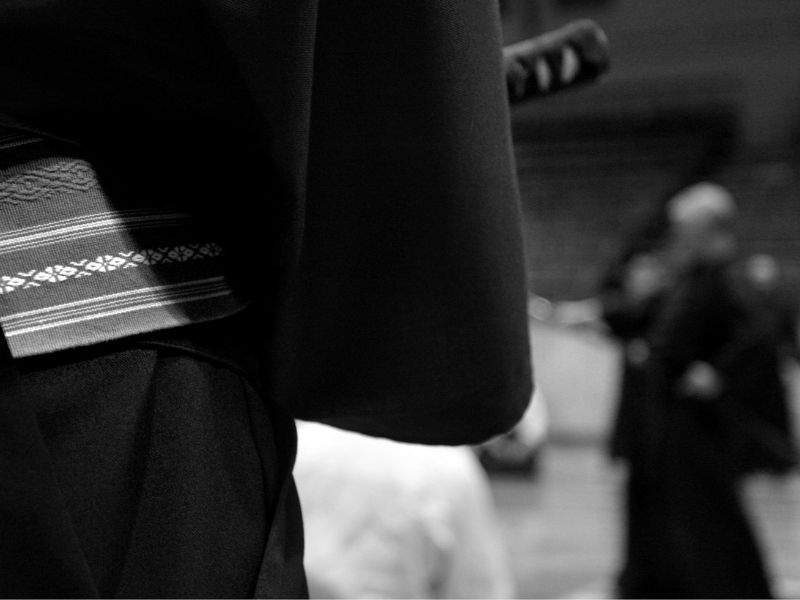
Any Iaido practitioner will tell you that one of the most important aspects of the discipline is proper form. A typical Iaido practice session will therefore involve spending a significant amount of time working on individual techniques, as well as drilling basic movements over and over again.
If the last few sections have been a bit full-on or a bit too technical, you will like this next section! Why? Because who doesn't love a good martial arts flick?
Both Aikido and Iaido have been featured in a number of films and TV shows, so if you want to learn more about them, then entertain yourself with the following 👊
Aikido Movies

These are some of the top movies and shows with Aikido in them:
- The Blind Swordsman: Zatoichi (2003)
- The Last Samurai (2003)
- Kill Bill: Vol. 1 (2003) and Kill Bill: Vol. 2 (2004)
- Street Fighter (1994)
- Ong-Bak: The Thai Warrior (2003)
- The Challenge (1982) TV series
Aikido can also be seen in popular shows such as:
- Daredevil (2015) TV series
- Arrow (2012) TV series
- Alias (2001-2006) TV series
- Chuck (2007-2012) TV series
- Xena: Warrior Princess (1995-2001) TV series
And as for movies with Iaido in them, you can look at the following really good ones:
- Kill Bill (2003)
- The Last Samurai (2003)
- Zatoichi (2003)
- 13 Assassins (2010)
- Lone Wolf and Cub: Baby Cart at the River Styx (1972)
- Sword of Doom (1966)
- Sanjuro (1962)
Conclusion: Aikido Vs. Iaido
I hope you now have a deeper understanding of Aikido and Iaido. In all truth, it is not about which discipline is "better" as they each have their pros and cons. If you do plan on starting classes for either, please check out my other related posts, as I have tried my best to answer all the FAQs related to the art.
Feel free to share this post and any graphics you like, and of course, if you have any questions or thoughts, drop them below or shoot me an email, and I will be happy to assist 🙂
[author-box-jpx-fitness]
